 January 16, 2019 John E. Ross, KD8IDJ, Editor
| ||||||
ARRL Board of Directors' Annual Meeting to Welcome New Members Newly elected ARRL Directors from four Divisions and one new Vice Director will be welcomed to the conference table when the ARRL Board of Directors meets for its Annual Meeting on January 18 - 19 in Windsor, Connecticut. New to the Board are Hudson Division Director Ria Jairam, N2RJ, of Sussex, New Jersey, who edged out incumbent Mike Lisenco, N2YBB, in last fall's balloting. The New England Division also will have new representation, as Fred Hopengarten, K1VR, of Lincoln, Massachusetts, succeeds Director Tom Frenaye, K1KI, who lost his re-election bid. Hopengarten, an attorney, is the author of Antenna Zoning for the Radio Amateur and has served as an ARRL Volunteer Counsel.
In the Northwestern Division, Mike Ritz, W7VO, of Scappoose, Oregon, has succeeded Jim Pace, K7CEX, who opted not to seek a new term after serving since 2014. New Northwestern Division Vice Director -- and past Eastern Washington Section Manager -- Mark Tharp, KB7HDX, is another fresh face. He topped a three-candidate field to succeed Bonnie Altus, AB7ZQ. In the Roanoke Division, George "Bud" Hippisley, W2RU, of Penhook, Virginia, is the new Director after outpolling Director Dr. Jim Boehner, N2ZZ, in last fall's voting. Hippisley served as ARRL Atlantic Division Vice Director from 1982 until 1985 and is the co-author of Practical Antenna Handbook. He was a 2010 recipient of the ARRL George Hart Distinguished Service Award. Also attending his first Board meeting will be Rocky Mountain Division Vice Director Robert Wareham, N0ESQ, of Highlands Ranch, Colorado. He was appointed last November to serve the remaining term of Jeff Ryan, K0RM, who assumed the position of Rocky Mountain Director upon the resignation of Dwayne Allen, WY7FD. New Director/Vice Director orientation was held on January 16 at ARRL Headquarters. The LoTW, Administration & Finance, and Programs & Services committees also met this week at Headquarters. The Board will elect ARRL officers, a new secretary, a new Executive Committee, and ARRL Foundation Directors. It will receive and consider reports from CEO Howard Michel, WB2ITX; Treasurer Rick Niswander, K7GM, and Chief Financial Officer Diane Middleton, W2DLM. According to the published agenda, the Board will hear reports from the Executive, Administration & Finance, and Programs & Services committees. The Board also will hear proposals for amendments to the Articles of Association and Bylaws. In addition, the Board will review recommendations contained in various other committee reports. Court Rules Excessive Antenna Application Fees Violated Reasonable Accommodation Long-pending Amateur Radio antenna litigation that ARRL helped to fund has finally borne fruit. The Supreme Court of the State of New York, Appellate Division: Second Judicial Department has ruled in the case of Myles Landstein, N2EHG, that the Town of LaGrange, New York, not only overstepped its state-granted authority by assessing excessive fees, but violated the limited federal preemption PRB-1 in the process. PRB-1 requires municipalities and states to "reasonably" accommodate Amateur Radio antennas and to apply the "minimum practicable regulation" in handling Amateur Radio antenna applications. The ruling is slated to be published as a case decision. Landstein, who lives in the Bronx, had wanted to erect a 70-foot antenna support structure for a multioperator station in the Hamlet of Lagrangeville; the Town of LaGrange has a 35-foot height limit.
"The Town incurred more than $17,000 in legal consulting fees in connection with [Landstein's] applications, and informed the petitioner that he was required to reimburse the Town for these fees before any determination would be made with respect to the applications," the court decision recounted. "The Town subsequently, as 'an accommodation to the petitioner,' reduced the amount...to...$5,874, but also required the petitioner to maintain a minimum advance continuing escrow balance of at least $1,000 to cover the Town's future consulting costs..." "We hold that, because the Town did not limit the consulting fees charged to the petitioner to those necessary to the decision-making function of the town's Planning Board and Zoning Board of Appeals, the town exceeded its state-granted authority by requiring payment of the consulting fees and, moreover, violated a rule promulgated by the [FCC]," the court concluded. Given the significant delay, Imlay said both he and Landstein had lost hope that the case would ever be resolved in Landstein's favor -- and in the favor of radio amateurs in New York, generally -- much less be a case that would "create favorable precedent for Amateur Radio." "ARRL originally was drawn to this case, because New York is the only state that, due to a very old case decision, has held that Amateur Radio antennas are not necessarily a 'normal accessory use' to residential real property," Imlay explained. "Because the issue in the case dealt with both that issue and the issue of cost prohibitions in the permitting process relative to the cost of the antenna installation, we decided to fund the case." Landstein lost at trial, and an appeal was filed in about 2015, for which ARRL provided memoranda of law about the cost-prohibition issue. "The antenna at issue and the support structure was to cost no more than $1,000," Imlay said. The court concluded that the town "may not use its land-use regulatory authority to construct 'hoop after hoop' for the petitioner to jump through in order to erect his radio antenna tower [and] cannot impose unreasonable expenses so as to create an insurmountable financial barrier to the pursuit of the project. In this context, not only must the consultant fees be reasonable..., but the underlying services must be necessarily related to those municipal regulatory functions which are not preempted by federal law." The Doctor Will See You Now! "Life Above 50 MHz" is the topic of the new (January 17) episode of the "ARRL The Doctor is In" podcast. Listen...and learn!
Every 2 weeks, your host, QST Editor-in-Chief Steve Ford, WB8IMY, and the Doctor himself, Joel Hallas, W1ZR, will discuss a broad range of technical topics. You can also email your questions to doctor@arrl.org, and the Doctor may answer them in a future podcast. Enjoy "ARRL The Doctor is In" on Apple iTunes, or by using your iPhone or iPad podcast app (just search for "ARRL The Doctor is In"). You can also listen online at Blubrry, or at Stitcher (free registration required, or browse the site as a guest) and through the free Stitcher app for iOS, Kindle, or Android devices. If you've never listened to a podcast before, download our beginner's guide. New 2019 Repeater Directory is Now Shipping The new 2019 ARRL Repeater Directory® includes crowdsourced listings contributed by users, repeater owners, and volunteer frequency coordinators. This means more listings that are updated more often. With 28,000 listings, the ARRL Repeater Directory is the most complete printed directory of on-the-air repeaters, covering systems throughout the US and Canada.
For decades, The ARRL Repeater Directory has been an invaluable source for locating repeater frequencies while traveling. New hams often use the Repeater Directory to find local activity after purchasing a new handheld radio, and public service volunteers keep a copy nearby or in their emergency go-kit. The 2019 ARRL Repeater Directory is now shipping. Order from the ARRL Store, or find an ARRL publication dealer; ARRL Item No. 1045, ISBN: 978-1-62595-104-5, $19.95 retail; ARRL member price $17.95. For additional questions or ordering, call 860-594-0355 (toll-free in the US, 888-277-5289). Winter Field Day 2019 is January 26 - 27, W1AW to Participate The Winter Field Day Association (WFDA) sponsors the 2019 running of Winter Field Day, January 26 - 27. WFDA says that the ability to conduct emergency communication in a winter environment is just as important as the preparation and practice that take place each summer, but with some additional unique operational concerns.
Members of the Warren County (NY) Radio Club (WCARC) will activate Maxim Memorial Station W1AW during 2019 Winter Field Day. Club members will work a rotating 24-hour operating schedule to ensure the most band/mode coverage. AMSAT Announces 50th Anniversary Awards Program AMSAT has announced its 50th Anniversary Awards Program, to help celebrate 50 years of keeping Amateur Radio in space. Satellite and HF contacts can help participants to earn one of these awards:
The 50th anniversary AMSAT OSCAR Satellite Communications Achievement Award will be issued on one of the original goldenrod paper stock certificates and signed by AMSAT's founding President, Perry Klein, W3PK (ex-K3TJE). "With only 20 original certificates Complete details are on the AMSAT website. Awards cost $25, plus postage. Certificates will be sequentially numbered. To receive the 50th Anniversary AMSAT Satellite Friends of 50 Award, work 50 stations on any satellite -- with a limit of one contact per day -- during 2019. Contacts may be made from various locations, as long as the operator uses his or her personal call sign (with any appropriate locators). This award is $15, plus postage. Complete details are on the AMSAT website. To achieve the AMSAT on HF 50th Anniversary Award, work at least one AMSAT member on any HF band in any mode. Additional award levels are based on the number of AMSAT members you contact on the HF bands. Complete details are on the AMSAT website. -- Thanks to Robert Bankston, KE4AL, AMSAT-NA Vice President of User Services German Satellite Special Event to Commemorate AMSAT 50th Anniversary
December YOTA Month Activity Records More Than 80,000 Contacts More than 80,000 contacts went into logs at YOTA suffix stations and others participating in December Youngsters on the Air (YOTA) Month, with most operations in International Amateur Radio Union Region 1 (IARU-R1). The final tally included 46,989 on SSB, another 28,064 on CW, some 3,814 on FT8, and the rest on various other modes. "This year, as many as 44 participating stations made 82,938 QSOs in December, proving once again that neither the weather nor the holidays can keep a radio amateur away from the station," Gergana Ruseva, LZ1ZYL, said in the 2018 YOTA Month report.
Ruseva said YOTA was happy to bring young radio amateurs together by hosting this event, which "inspires them to be more active on the bands and shows them there are many people listening on the other side." The most active station during YOTA Month 2018 was II5YOTA in Italy, which logged 8,387 contacts. The preferred bands turned out to be 40 and 20 meters, with more than 30,000 contacts logged from YOTA Month participants on each band. Complete statistics are on the YOTA website. YOTA also has announced that the YOTA Youth Sked will start up again in 2019. The on-the-air event will take place every fourth Thursday from 1900 to 2200 UTC, with a different group of youngsters acting as net control. The YOTA Youth Sked will convene on or about 7.175 MHz, shifting later to 3.675 MHz. US Islands Awards Program Announces 25th Anniversary Award, Recent Rule Changes The US Islands (USI) Awards Program celebrates its 25th anniversary this year and is offering a commemorative award for both chasers and activators for contacts made between January 1 and December 31.
The following permanent rule changes went into effect on January 1: The minimum contact count for island qualifications has been lowered from 25 to 15; the contact requirement of two DXCCs during an island qualification has been dropped, and the bands eligible for island qualifications have been expanded to include 6 meters and satellite contacts. In Brief...
The K7RA Solar Update Tad Cook, K7RA, Seattle, reports: No sunspots were observed since January 6, so average daily sunspot numbers declined from 7.7 to 0 for the January 10 - 16 reporting week. Average daily solar flux dropped from 71.6 to 69.4 over the same period. The average daily planetary A index went from 7.4 to 4.9, and the average mid-latitude A index dipped from 6.1 to 4.
Predicted planetary A index is 5 on January 17 - 22; 8, 20, 12, and 8 on January 23 - 26; 5 on January 27 - 30; 10, 15, 12, and 8 on January 31 - February 3; 5 on February 4 - 10; 12 and 10 on February 11 - 12; 5 on February 13 - 19; 18, 10, and 8 on February 20 - 22; 5 on February 23 - 26, and 12, 18, 15, and 10 on February 27 - March 2.
Predicted smoothed sunspot number for the month of January 2019 is 9. Sunspot numbers for January 10 - 16 were 0, 0, 0, 0, 0, 0, and 0, with a mean of 0. The 10.7-centimeter flux was 70.1, 68.1, 69.6, 68.9, 70, 69.5, and 69.7, with a mean of 69.4. Estimated planetary A indices were 4, 7, 3, 3, 6, 5, and 6, with a mean of 4.9. Estimated mid-latitude A indices were 3, 5, 2, 3, 6, 4, and 5, with a mean of 4. Share your reports and observations. Just Ahead in Radiosport
See the ARRL Contest Calendar for more information. For in-depth reporting on Amateur Radio contesting, subscribe to The ARRL Contest Update via your ARRL member profile email preferences. Upcoming ARRL Section, State, and Division Conventions
Find conventions and hamfests in your area.
. .
Subscribe to...
Free of charge to ARRL members...
| ||||||
.jpg)
 "This case, which goes back to 2013, was about applying PRB-1 to a situation in which a municipality attempted to thwart the installation and maintenance of ham radio antennas by imposing excessive permit application costs on the ham applicant," said communications attorney Chris Imlay, W3KD, who is familiar with the case. Imlay said the FCC has refused to clarify the cost-prohibition issue as it relates to PRB-1's "minimum practicable regulation" and reasonable accommodation provisions of PRB-1.
"This case, which goes back to 2013, was about applying PRB-1 to a situation in which a municipality attempted to thwart the installation and maintenance of ham radio antennas by imposing excessive permit application costs on the ham applicant," said communications attorney Chris Imlay, W3KD, who is familiar with the case. Imlay said the FCC has refused to clarify the cost-prohibition issue as it relates to PRB-1's "minimum practicable regulation" and reasonable accommodation provisions of PRB-1. Sponsored by
Sponsored by 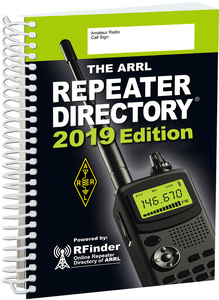 Repeater systems are listed by state/province, city, and operating mode. Digital repeater systems are included: System Fusion, D-STAR, DMR, NXDN, and P25 systems. It is available in one size -- 6 × 9 inches -- with a convenient lay-flat spiral binding. To make it your own, the cover includes space to personalize your directory. Pages of supplemental information include VHF/UHF and microwave band plans, and repeater operating practices.
Repeater systems are listed by state/province, city, and operating mode. Digital repeater systems are included: System Fusion, D-STAR, DMR, NXDN, and P25 systems. It is available in one size -- 6 × 9 inches -- with a convenient lay-flat spiral binding. To make it your own, the cover includes space to personalize your directory. Pages of supplemental information include VHF/UHF and microwave band plans, and repeater operating practices.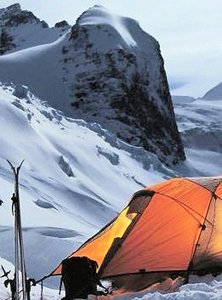 "We believe that maintaining your operational skills should not be limited to fair-weather scenarios," WFDA said in announcing this year's event. "The addition of Winter Field Day will enhance those already important skills of those that who generously volunteer their time and equipment to these organizations. Preparedness is the key to a professional and timely response during any event, and this is what local and state authorities are expecting when they reach out to emergency service groups that offer their services." The event is open to all radio amateurs.
"We believe that maintaining your operational skills should not be limited to fair-weather scenarios," WFDA said in announcing this year's event. "The addition of Winter Field Day will enhance those already important skills of those that who generously volunteer their time and equipment to these organizations. Preparedness is the key to a professional and timely response during any event, and this is what local and state authorities are expecting when they reach out to emergency service groups that offer their services." The event is open to all radio amateurs.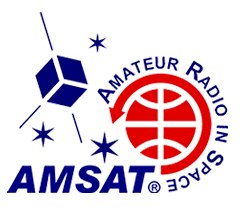 available, this award will certainly become a collector's item," AMSAT said.
available, this award will certainly become a collector's item," AMSAT said.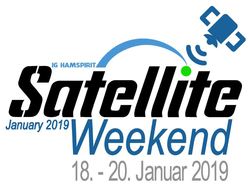 AMSAT's 50th anniversary will be celebrated with AMSAT-DL (Germany) special event call sign DL50AMSAT. The station will be on the air from Saxony on the Czech Republic border via satellites only, and will debut during the
AMSAT's 50th anniversary will be celebrated with AMSAT-DL (Germany) special event call sign DL50AMSAT. The station will be on the air from Saxony on the Czech Republic border via satellites only, and will debut during the .jpg)
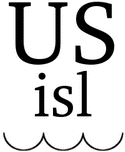 To qualify, chasers must confirm 25 islands during 2019, as a club or individual, and activators must qualify or activate 25 islands in any combination, making at least 15 contacts for both new island qualification and island activation. This award can be issued to multiple club members using a single call sign, or to an individual. Send a list of confirmed or activated islands to Award Chairman Jay Chamberlain, NS4J. The list should include name, call sign, address, email, USI number, island name, date worked or activated, and call sign used or worked.
To qualify, chasers must confirm 25 islands during 2019, as a club or individual, and activators must qualify or activate 25 islands in any combination, making at least 15 contacts for both new island qualification and island activation. This award can be issued to multiple club members using a single call sign, or to an individual. Send a list of confirmed or activated islands to Award Chairman Jay Chamberlain, NS4J. The list should include name, call sign, address, email, USI number, island name, date worked or activated, and call sign used or worked.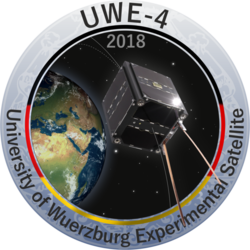 On-Orbit Frequency Change Announced for UWE-4 CubeSat The Satellite Technology group at the University of Würzburg has announced a change of frequency for the UWE-4 CubeSat, launched on a December 27 Soyuz flight. The 1U CubeSat carries an electric propulsion experiment and a 70-centimeter 9.6 k AX.25 digipeater. "After 2 weeks in orbit, UWE-4 is in very good shape," the group reported. "After the early-orbit phase, we are looking forward to some interesting experiments with the attitude determination sensors and the propulsion system. Unfortunately, our uplink success rate is very poor, which currently prevents these experiments." The university team said that the problem appears to be a "substantial noise floor" at the original frequency. "For this reason, we filed a request for the change of our radio frequency to 435.600 MHz with IARU, which has already been approved," the group said. The procedure to change the UWE-4 frequency began on January 10. The Satellite Technology Group requested that radio amateurs
On-Orbit Frequency Change Announced for UWE-4 CubeSat The Satellite Technology group at the University of Würzburg has announced a change of frequency for the UWE-4 CubeSat, launched on a December 27 Soyuz flight. The 1U CubeSat carries an electric propulsion experiment and a 70-centimeter 9.6 k AX.25 digipeater. "After 2 weeks in orbit, UWE-4 is in very good shape," the group reported. "After the early-orbit phase, we are looking forward to some interesting experiments with the attitude determination sensors and the propulsion system. Unfortunately, our uplink success rate is very poor, which currently prevents these experiments." The university team said that the problem appears to be a "substantial noise floor" at the original frequency. "For this reason, we filed a request for the change of our radio frequency to 435.600 MHz with IARU, which has already been approved," the group said. The procedure to change the UWE-4 frequency began on January 10. The Satellite Technology Group requested that radio amateurs .jpg) ISS Fan Club Website Closed, New ISS Fan Club Site Opened The
ISS Fan Club Website Closed, New ISS Fan Club Site Opened The  Japanese Ham Receives License to Operate in Myanmar Akio Taguchi, JE2QIZ/AC7XZ, reports that he has received a license from the Myanmar (formerly known as Burma) Ministry of Transportation and Communication and has been on the air as XZ2B. Taguchi explained that Myanmar only permits Amateur Radio operation from 20 MHz to 300 MHz at a power of just 25 W, and he plans to operate a fishing rod antenna from his hotel. Because license fees in Myanmar are assessed in terms of spectrum used, Taguchi said his license authorizes operation within 20 kHz of the band edge. He will operate CW only. As of January 12, he reported having contacted fewer than 30 stations, including New Zealand, Australia, China, the Philippines, and Russia. His license is valid for 150 days.
Japanese Ham Receives License to Operate in Myanmar Akio Taguchi, JE2QIZ/AC7XZ, reports that he has received a license from the Myanmar (formerly known as Burma) Ministry of Transportation and Communication and has been on the air as XZ2B. Taguchi explained that Myanmar only permits Amateur Radio operation from 20 MHz to 300 MHz at a power of just 25 W, and he plans to operate a fishing rod antenna from his hotel. Because license fees in Myanmar are assessed in terms of spectrum used, Taguchi said his license authorizes operation within 20 kHz of the band edge. He will operate CW only. As of January 12, he reported having contacted fewer than 30 stations, including New Zealand, Australia, China, the Philippines, and Russia. His license is valid for 150 days. 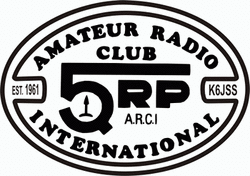 Registration is Open for QRP-ARCI "Four Days in May" 2019
Registration is Open for QRP-ARCI "Four Days in May" 2019 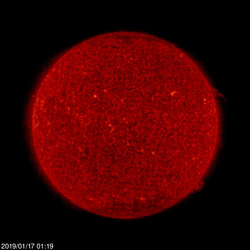 Predicted solar flux for the next 45 days is 70 on January 17 - 20; 72 on January 21 - 23; 71 on January 24 - February 1; 70 on February 2 - 4; 69 on February 5 - 13; 70 on February 14 - 15; 71 on February 16 - 28, and 70 on March 1 - 2.
Predicted solar flux for the next 45 days is 70 on January 17 - 20; 72 on January 21 - 23; 71 on January 24 - February 1; 70 on February 2 - 4; 69 on February 5 - 13; 70 on February 14 - 15; 71 on February 16 - 28, and 70 on March 1 - 2.







